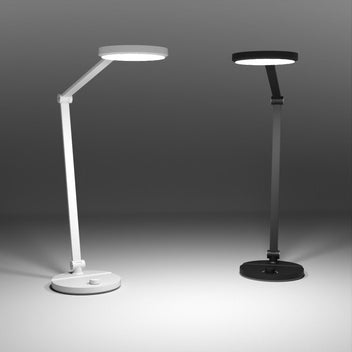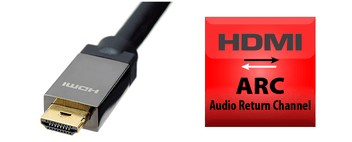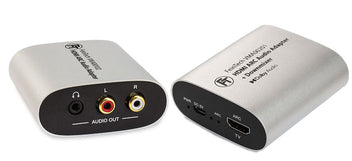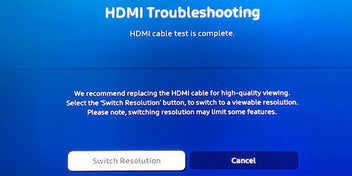Display technology is constantly evolving and with it the possibilities of video transmission. One of the most interesting developments in recent years is the introduction of 120 Hz refresh rates in various applications, from gaming to professional video productions. But what are the advantages and disadvantages of this technology, which has been introduced in particular with HDMI 2.1? In this blog post we will take a closer look at the aspects of video transmission in 120 Hz.
What does 120Hz mean?
Before we dive into the details, it's important to understand what 120 Hz means. The refresh rate of a display indicates how many times per second the image is updated. A 120 Hz display updates the image 120 times per second. For comparison, traditional displays often operate at 60 Hz, or 60 image updates per second.
You are familiar with these technical values if you are interested in gaming. The performance of the graphics card is often the bottleneck for the output of action games in high resolution. The performance of the graphics card is only decisive for the FPS rate (frames per second), i.e. how many individual images can be calculated per second. For a frame rate of 60 when gaming in 4K, the latest and best graphics cards are necessary. For output from the Windows desktop or office applications in 4K 60Hz, however, on-board graphic is sufficient. Frame rate and refresh rate are therefore different values.
For gaming, it is important that the refresh rate of the display is synchronized with the respective frame rate of the graphics. Otherwise, there will be "tearing". Tearing occurs when the frame rate of the graphics card is not synchronized with the refresh rate of the monitor, which leads to visible "tears" in the image. The HDMI 2.1 Variable Refresh Rate (VRR) function prevents tearing by dynamically adjusting the refresh rate of the monitor to the frame rate of the graphics card. Freesync and G-Sync are similar technologies from the PC world.
Advantages of video transmission in 120Hz
1. Smoother display
The most obvious advantage of 120 Hz is the significantly smoother representation of movements. This is particularly beneficial for fast movements such as those found in action games. The higher refresh rate reduces motion blur and ensures a smoother and more pleasant viewing experience. However, this only works if the content was produced in 120 Hz - currently mainly in gaming. Or if the display itself calculates intermediate images with a powerful image processor and thus enhances 24 Hz films.
2. Better response times
For gamers, response time is crucial. A 120Hz monitor can process and display inputs faster, resulting in a faster response time. This can be the difference between winning and losing in competitive games.
3. Less eye strain
Smoother scrolling and reduced motion blur from the mouse pointer can reduce eye strain, especially during prolonged use. This is a significant benefit for people who spend many hours a day in front of a screen.
4. Compatibility with high-end hardware
Modern graphics cards and game consoles increasingly support higher refresh rates. By using a 120 Hz display, users can exploit the full potential of their hardware and enjoy an optimal experience.
Disadvantages of video transmission in 120Hz
1. Higher display costs
One of the biggest drawbacks is the higher price. 120 Hz monitors and TVs are usually more expensive than their 60 Hz counterparts. Only newer hardware is capable of outputting 120 Hz.
2. Higher energy consumption
Players and displays with higher refresh rates generally consume more energy. This can lead to higher operating costs and is less environmentally friendly. With longer use, electricity costs can rise significantly. The production of new, powerful hardware also requires additional resources.
3. Limited content
There is currently not much content that has actually been produced in 120 Hz. And it won't be in sight for a long time. Almost all films and TV shows are produced in 24 Hz. Films with 60 Hz are usually self-produced and can be found on YouTube and similar portals. The full potential of a 120 Hz display is currently only being exploited in gaming.
4. Hardware requirements
To take full advantage of 120 Hz, powerful hardware is required. This means that both the computer and the graphics card must be powerful enough to display content at this high refresh rate. Such graphics cards and game consoles are much more expensive. The spatial range of 120 Hz signals is much smaller than that of 60 Hz.
5. Possible compatibility issues
The rest of the signal chain from the HDMI cable to the HDMI switch/splitter and the sound system must also be able to cope with the new transmission method. This will lead to compatibility problems, especially with older devices or software. Users must ensure that all their equipment is compatible in order to take full advantage of the benefits.
Conclusion
120 Hz video transmission offers numerous advantages, especially for gamers and professional users who value smoother movements and better response times. However, the higher cost and increased energy consumption are major disadvantages that must be taken into account. In addition, the availability of 120 Hz content is currently very limited. However, those with the appropriate hardware and budget can benefit from a significantly improved viewing experience.
Overall, it is clear that 120 Hz is not necessary for normal films and videos, but can be a useful technology for gamers.





















